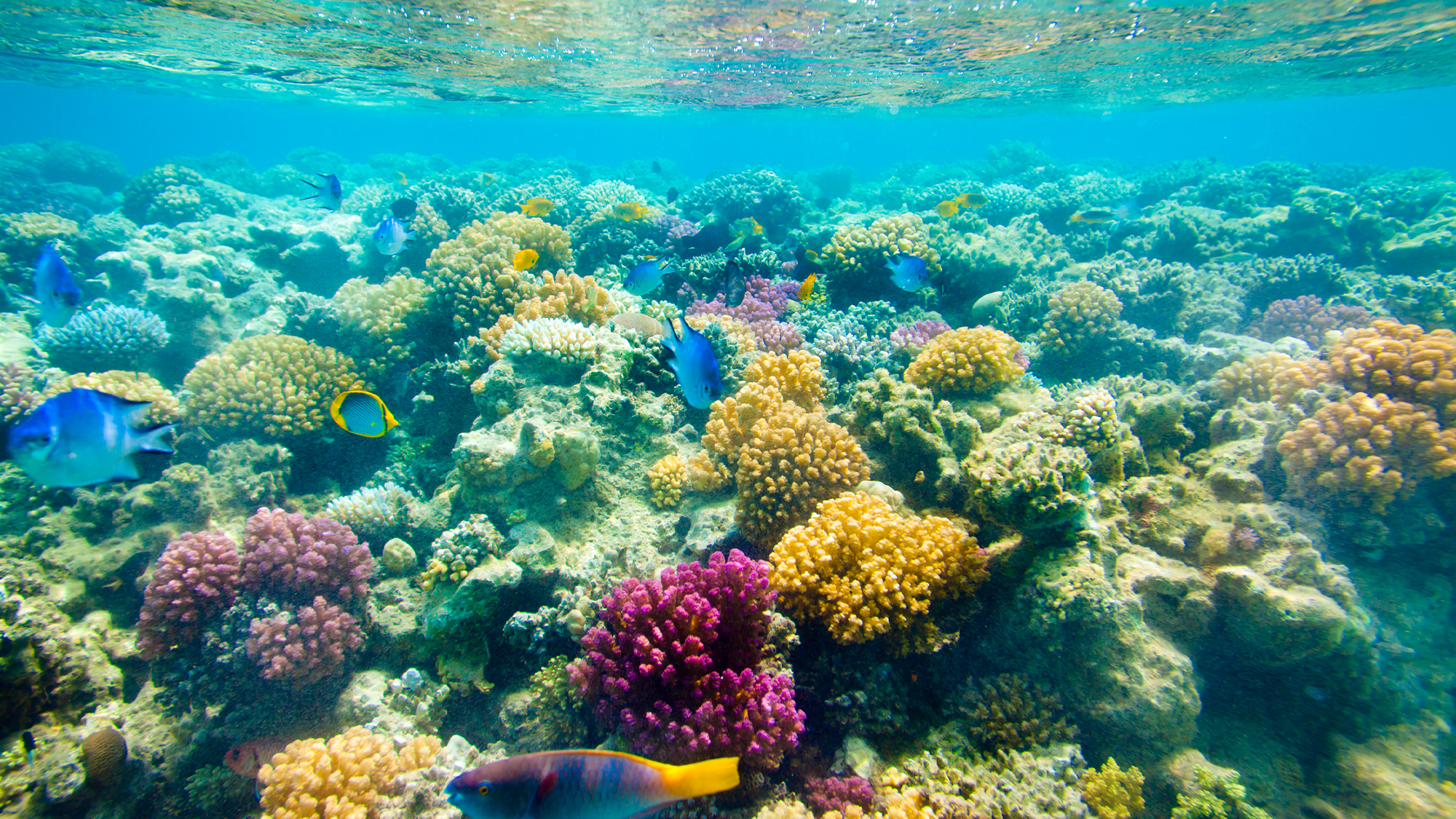

Two items better known for cleaning swimming pools and moisturizing dry skin might help protect the Earth’s corals and decrease antibiotic resistance and pollution in the ocean. A paste made from chlorine and cocoa butter could be a future treatment for Atlantic corals affected by stony coral tissue loss disease (SCTLD). The experimental findings are described in a study published November 14 in the journal Frontiers in Marine Science.
What is stony coral tissue loss disease?
Coral reefs around the world are in big trouble because of warming oceans, habitat degradation, pollution, and diseases. SCTLD is a highly lethal disease in corals that was first spotted in 2014. According to NOAA, it affects over 20 coral species and is present on reefs in 18 countries and territories. It usually appears as a lesion on the coral that goes on to destroy the soft tissue. SCTLD is particularly severe because it is transmitted very quickly, spreads to many hosts, and has a high mortality rate. It usually kills corals within weeks or months of becoming infected.
[Related: Caribbean coral is getting sick and dying. A probiotic could help.]
Antibiotics like amoxicillin are the most common treatment method that marine biologists use to stop SCTLD’s spread. However, this comes with side effects like increased antibiotic resistance–just like in humans.
“Antibiotic pollution is a problem worldwide, so we’re working to develop a non-antibiotic treatment that would slow down tissue loss diseases,” study co-author and Qatar University marine biologist Greta Aeby said in a statement.
Amoxicillin vs. chlorine
In the new study, a team compared the effectiveness of various SCTLD treatments by applying them to infected corals of Horseshoe Reef, near the British Virgin Islands. Some of the groups were treated with amoxicillin. The others were treated with a paste mixed from chlorine and cocoa butter.
“In this mix, the active ingredient is sodium hypochlorite, an antiseptic commonly used to kill bacteria or viruses,” said Aeby. “The chlorine powder we used in our treatment is the same used to kill germs in swimming pools. The cocoa butter was just the delivery mechanism allowing us to spread the chlorine on the coral lesions.”

They applied both types of treatments directly to corals and checked the reef every four or five weeks. On these visits, they measured and described any lesions and reapplied the treatment as necessary. After about 80 days, the median percentage of tissue lost was 17.6 percent for chlorine-treated coral colonies and 1.7 percent for amoxicillin-treated coral colonies.
A better bet for the ocean
While the traditional antibiotic treatment was more successful at containing the spread of SCTLD, these come with unwanted side effects. They can lead to more antibiotic-resistant bacteria and using something like the chlorine treatment could help minimize that risk.
“Any organism–crabs, fish, even humans–in that same environment has a higher risk of encountering bacteria that are now antibiotic-resistant,” said Aeby.
Additionally, antibiotic treatments can also greatly impact the environment. They can be toxic to other organisms and lead to further resistance that makes bacterial diseases difficult to treat. The chlorine and cocoa butter paste is more easily biodegradable and the chlorine’s potency naturally deactivates within 24 hours. The ingredients also make it much less expensive to produce since the ingredients can be found in hardware stores and pharmacies.
“The antibiotic paste is not only tedious to produce, it also is often too expensive for conservationists, who operate with minimal funding on Caribbean islands,” Argel Horton, a study co-author and marine biologist at the Ministry of Environment, Natural Resources and Climate Change of the British Virgin Islands, said in a statement.
Cleaner oceans fight disease
However, not all of the corals in the study responded equally well to the treatments. With more than 6,000 known coral species, there are numerous corals from different environments that couldn’t be included in this study. The team hopes that future studies can test the effectiveness of different treatment methods on other corals.
[Related: World’s largest known deep-sea coral reef is bigger than Vermont.]
While disease treatment can help, it does not remove it from a coral population, the way that simply treating a cold does not remove it from circulating in humans. More direct treatments can lessen the pathogen load in the environment, but treating coral colonies individually and by hand like the team in the study is not feasible long-term or on a large scale.
“The best strategy would be to improve environmental conditions so that corals have a better chance of fighting disease themselves,” said Aeby. “This includes cleaning up water pollution and rebalancing the ecosystem.”